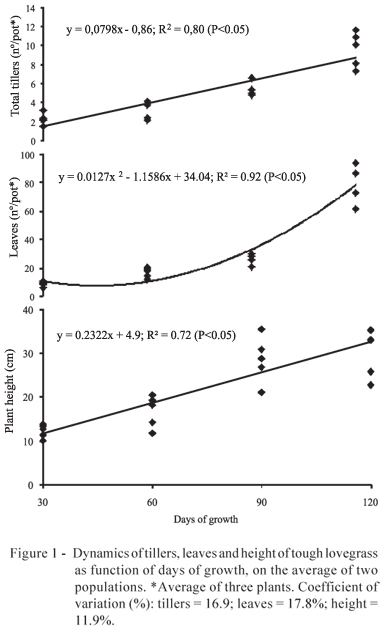This study evaluated the morphological development of two populations of tough lovegrass during 120 days of continuous growth (Experiment I), and the regrowth of one population under the combination of cutting height (5 cm and 10 cm) and phenological stage at the first cutting (vegetative and beginning of flowering; Experiment II). In Experiment I, plants were harvested at 30, 60, 90 and 120 days of growth; in Experiment II, three cuttings were carried out at every 30 days, and the plants were harvested four weeks after the previous one. In Experiment I, the populations did not differ for morphological development, showing a linear increase in height and tiller number, and a quadratic trend for root and shoot dry matter (DM). At 120 days of growth, plants presented 10 basal tillers and 80 leaves, strongly compressed at the base and no sign of senescence. In Experiment II, there was no significant cutting height × phenological stage interaction, but cuttings at 5 cm reduced plant size and yield. Cuttings started at the vegetative stage decreased the root (3.06 g DM/plant) and stubble dry matter (1.17 g DM/plant), compared with 6.84 g and 3.99 g DM/plant, respectively, with cuttings started at the flowering stage. Tough lovegrass shows basal architecture, basal bud renovation, leaves densely compressed in the tiller base, high belowground allocation, and elongation of internodes only in reproductive stage. Mechanical control is an alternative method to minimize its growth, especially if it is carried out early in the growing season and at low cutting height.
cutting height; phenological stage; root; stubble








